チュクヴェーズ官房長官は、ジュネーブは人権、人道援助、軍縮、貿易を扱おう機関があり活気に満ちた場所である。特にジュネーブを人権擁護の重要な場であると述べた。そして、ジュネーブよりも豊富な協力活動を行っている都市はないと力説した。
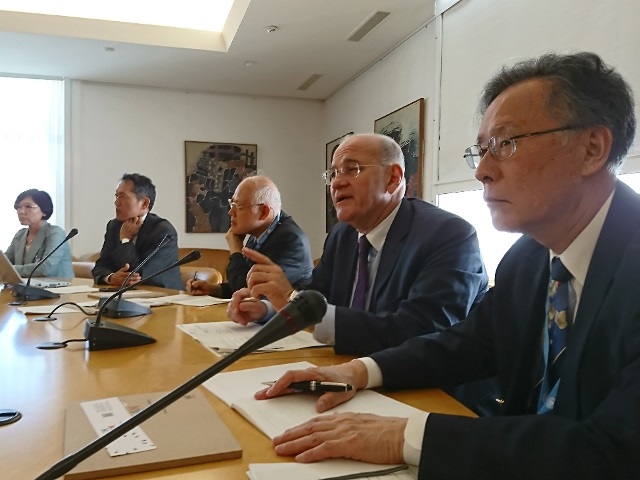
In opening the Geneva Dialogue, Professor Sukehiro Hasegawa, former Special Representative of the Secretary-General and Director of ACUNS Tokyo Office, informed the participants that the Geneva Dialogue was organized to enable the scholars and practitioners of UN activities to engage in genuine dialogue with senior officials of the UN and international organizations. He hoped the participants will hold frank exchanges of views and opinions that reflected different perspectives and understandings of human rights, refuges, migrations and peacebuilding which, he thought, were essential for enhancing the roles of the UN system in facing intensifying global challenges. He explained the procedure of each session that starts with the presentations followed by comments by pre-selected discussants and free discussions of participants as a whole.
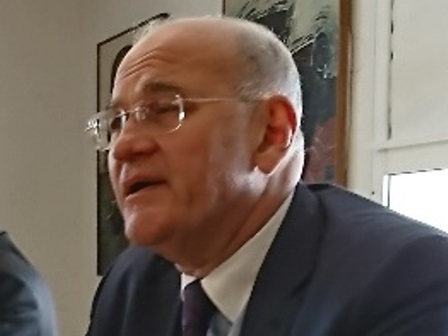
In his opening statement on behalf of Mr. Michael Møller, the Under-Secretary-General of the United Nations and Director-General of the United Nations Office at Geneva. Mr David Chikvaidze, Chef de Cabinet of the Director-General, expressed condolences to Japanese colleagues for the significant loss of life recently in the western part of Japan due to sudden massive rainfalls. He welcomed the scholars of East Asian countries in Geneva noting that Director-General Michael Møller was not in Geneva, otherwise he would have welcomed them personally. He attached great importance to collaboration with academics, who were vital partners for the UN. Their contributions enabled the UN to respond to international crises. He thanked the ACUNS Tokyo office for organizing the event and he looked forward to constructive exchanges of views on such issues as human rights, refugees, migration, security and peacebuilding that were dealt with by the United Nations system.
Mr. Chikvaidze noted that it was fitting that this conversation on human rights was taking place in Geneva. No city had a richer history of collaboration than Geneva. He reminded that humanitarian cooperation was born there with the Red Cross. As much as New York was the political centre of the international community, Geneva was the operational heart with more than 100 UN and other international organizations, notwithstanding academics as well as businesses. This city was a laboratory. Proximity fostered collaboration and stakeholders were willing to experiment. This new collaborative way was essential in tackling contemporary challenges which were often interconnected. The mind-set was embedded in the sustainable development goals for a safer and more prosperous future. In an effort to leverage this potential, the Director- General had launched the SDG lab, which provided a space for interdisciplinary practice. It brought together parties in conflict or competition that would not have met to collaborate otherwise. The SDG embraced technology, recognizing its potential. Geneva’s concentration of actors allowed it to claim a central role in the SG’s ambitious reform of the UN in the areas of peace and security, repositioning of development system and internal management.
He identified four fields of action in Geneva: human rights, humanitarian aid, disarmament and trade. Geneva was a prime place for human rights with the Human Rights Council, which addressed human rights in every member. Its profile had attracted political disputes normally reserved for the Security Council. He mentioned also the High Commissioner for Human Rights. Geneva was also the heart of humanitarian action since 1863 and the ICRC had been joined by the High Commissioner for Refugees and Medecins sans Frontieres (MSF). With the World Trade Organization, Geneva remained the global centre for trade promotion and negotiation. Geneva would likely emerge as the hub for settling growing disputes. Geneva was also a global hub for disarmament with the only permanent multilateral negotiating body on disarmament. After years of deadlock, the conference had stirred to life. In new geopolitical context and with Switzerland`s commitment to neutrality, Geneva was well placed to remain the convening location in all these four areas.
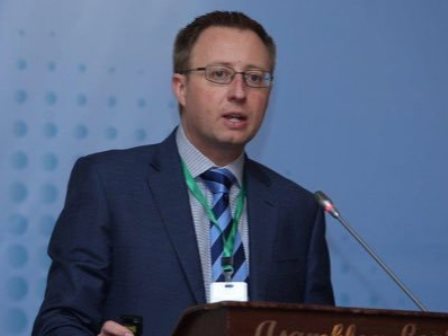
Following the introductory remarks by David Chickvaidze, Mr. Daniel Feakes, Head of the ISU of the Geneva Branch of the UN Office for Disarmament Affairs introduced the topic of disarmament. His team was overseeing the application of the convention on biological weapons. The Secretary-General came here in May and launched a new disarmament agenda: securing our common future, within the broader UN agenda of the sustainable goals. He then enumerated the contemporary challenges: rising military expenditure, new weapons technologies, the use of conventional weapons in populated areas, most conflicts taking place inside states with small arms and light weapons, the majority of victims being civilians, the trend of terrorism with a large rise in the number of deaths, the erosion of norms which is a challenge for disarmament regimes.
Regarding disarmament, he explains the three categories: weapons of mass destruction and other strategic weapons, conventional weapons, emerging means of warfare and new technology. Disarmament contributes to reducing the effects of wars and conflicts, to eliminating some key incentives to new conflicts such as arms race, and liberating resources for development. Disarmament has been a key issue for the UN since the beginning. The office was established in 2007 as the UN Office for Disarmament Affairs. UNODA works for several objectives. While the main office was based in New York, the Geneva branch served over 135 countries and three UN Regional Centres based in Lima for Latin America, Kathmandu for Asia and Lomé for Africa. The branches included an information branch, a conventional weapons branch, and mass destruction weapons branch. The Conference in Geneva consists of about 15 people.
He then explained the treaty making process. When the international community agrees that there is a particular issue and that a weapon must be banned, the problem is therefore identified. Lots of negotiations take place in the conference and they may take a very long time, the end result being a treaty signed and ratified by states and implemented by them. He then listed the various conventions such as the chemical weapons convention finalised in 1993 and the comprehensive nuclear test ban treaty in 1996 as well as the treaty on the non-proliferation of nuclear weapons. There is a good track record of negotiated treaties. Concerning challenges, he mentioned the existing stalemate since 1996 to agree on a programme of work because it was based on consensus. He added that 65 states are involved. He mentioned finally a UN disarmament fellowship programme aimed at officials of developing countries to train them in the field of disarmament. Almost a 1000 officials have participated from over 160 states with a 50% balance between men and women.
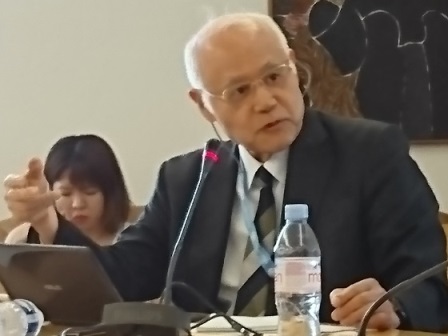
Professor Tadanori Inomata of Japan, Former Ambassador to Costa Rica and Strategic Advisor of Nagasaki University’s Center for International Collaborative Research then pointed out the importance of creating confidence among nations and peoples which should be made via the second-track consultation among non-state actors. He noted that “disarmament” has been inadvertently translated “arms reduction” in Japanese, which was similar to “arms control” reflecting a sense of distrust and deterrence philosophy rather than confidence built to disarm. He thought the UN should work much more in Geneva than in New York where the Security Council in New York was paralyzed by the veto power. Geneva is full of varied non-state actors and stakeholders reflecting peace loving culture of peoples who might positively influence on the CD’s work.
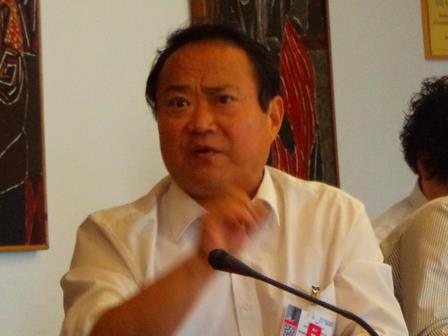
Professor Hong-sheng SHENG, Professor, Shanghai University of Political Science and Law Director, OBOR Judicial Research Institute, the Supreme People’s Court, China, and Ex- United Nations Expert on Mission, MONUC observed that the speakers introduced new elements of the UN approaches. He then raised the issue of new technology of warfare. As far as he knew, there was no international convention, no prohibition on this matter. He invokes the Martens clause. No matter what the new strategy was, the new means of warfare, the international community needed to follow the dictate of public conscious and impose limits on the conduct of warfare. He wondered whether or not there was any possibility for reaching an agreement on a convention on such issue.
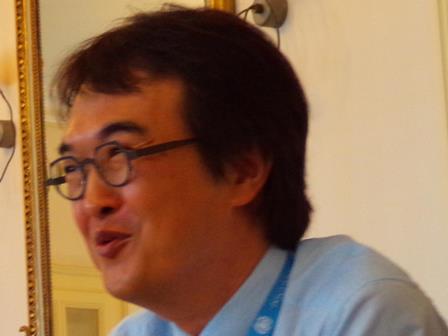
Professor Soh Chang-rok of Korea University Graduate School of International Studies and a member of the UN Human Rights Council (HRC) Advisory Committee observed that there was a challenge to integrate non-state actors in the UN system, especially in the field of human rights. There was no human rights regime in East Asia. Without human rights, they cannot expect peace and security. It is part of the infrastructure. He thought it was important to have cooperation between Asian countries. He asked how to enhance the collaboration among them. He explained that they could use existing mechanisms such as UPR and SDG. UPR is a country specific review exercise but could be extended into a regional mechanism. He thought that with the OHCHR they might collaborate in an inclusive approach in East Asia.
Chikvaidze responded to observations and explained that the important thing was for the member states to read the books of academicians. The disarmament conference was the only major intergovernmental forum that did not have a mandate with the civil society. In order to address this issue, the Director-General created the concept of member states and civil society forum. He then mentioned hypersonic weapons, which were extremely dangerous from the standpoint of lowering the threshold of weapons leaving long term effects.
Daniel Feakes recognized the issue of confidence building as constituting a basis in building disarmament process. Concerning chemical weapons, the UN lacked resources but had ways of building confidence. Referring to the Martens clause, he mentioned there was no convention in the field of cybersecurity. Some countries wanted the current discussions to lead to a convention, while others did not agree. In each treaty, there was a general purpose. It was the idea to ban the use of chemical and biological weapons. Conventions did not only ban a certain kind of technology but a mean of warfare. Considering non-state actors, there was a room for very active participation from civil society, especially academics. The UN could also maintain an active relationship with NGO. About Syria, the issue of chemical weapons has been addressed by the convention of chemical weapons. The process to attribute the use of chemical weapons was different, with reports putting the blame on ISIS, some on the Syrian government, but that process did not move forward on anymore.
(The report is filed by Simon Panchaud of the Graduate Institute of International and Development Studies, Geneva.)
Professor Hasegawa,
Ambassador Inomata,
Distinguished Professors, scholars,
Ladies and gentlemen,
It is my pleasure to welcome this distinguished gathering of scholars to the Palais des Nations on behalf of the Director-General of the United Nations Office at Geneva. Mr. Møller regrets he cannot be with us today as he attaches particular importance to collaboration with academia. He and I share the conviction that universities and think tanks are vital partners for the United Nations. Vital because your research makes it possible for the international community to improve its response to the many crises we face today. On that note, I would like to thank the Tokyo Liaison Office of the Academic Council on the United Nations System, and personally Professor Hasegawa and his team, so ably led by Professor Kihara-Hunt for bringing us all together today. I look forward to a spirited exchange on multilateralism and the work of the United Nations.
It is particularly fitting that this discussion on human rights, migration and peacebuilding in a turbulent age takes place in Geneva for two reasons. One was made obvious during your tour of the Palais this morning: no city has a richer history of international collaboration than Geneva. It saw the birth of the humanitarian movement with the International Committee of the Red Cross, of international law with the Geneva Convention and of multilateral institutions with the League of Nations. For over 80 years, the walls surrounding you have borne witness to the successes of international collaboration: from the eradication of smallpox to the negotiations that make technology like smartphones possible.
But Geneva is far more than a museum dedicated to past triumphs. It is front and centre in our collective efforts to tackle global challenges; it is fundamental to the work of the United Nations. Much as New York is the political centre of the international system, Geneva is its operational heart. That is because Geneva brings together a unique concentration of actors: more than 100 international organizations, hundreds of NGOs, world-class academic institutions and a vibrant business community. Geneva’s role is also due to its cooperative mentality. This city is a veritable laboratory, where the proximity of actors fosters collaboration, deep institutional knowledge is shared and parties are willing to experiment, to sometimes fail, but ultimately to make breakthroughs.
This new collaborative way of working is essential to tackling today’s challenges, which are interconnected in ways that are not always readily apparent. Tackling these problems will require us to break silos, forge innovative partnerships and think differently. This is the mind-set embedded in the Sustainable Development Goals, our collective roadmap to a safer, fairer and more sustainable future. That is why Geneva has emerged as a global hub for action on the SDGs. It is in an effort to leverage this potential, that the Director-General set up an SDG Lab last year. The Lab, which includes staff from international organizations, national governments and NGOs, creates space for interdisciplinary and multi-sectoral partnerships. It shares best practices. It tests assumptions and asks difficult questions about what is needed to achieve the 2030 Agenda. It also brings together parties that would not otherwise have met to collaborate through the Geneva 2030 Ecosystem, a gathering open to the UN family, NGOs, academics and the private sector. The SDG Lab also embraces technology, the private sector and innovative start-ups. Recognizing untapped potential, the SDG Lab helped the Millennium Institute promote a tool that helps governments understand the impact of their actions on the Goals. The Lab amplified this tool, which is now used by five countries in Africa.
Geneva’s concentration of actors and expertise is also playing a central role in our efforts to implement the Secretary-General’s ambitious reform agenda of the UN, focused on three areas: the UN’s peace architecture, development system and internal management. As many of you here are yourselves scholars in UN reforms, I am sure you can contribute interesting insights on this vital effort.
Today and tomorrow, you will have the chance to interact directly with some of the key players in Geneva. While they will be better placed to discuss in-depth their work, allow me to provide an overview of what is taking place here in Geneva, with a focus on just four fields: human rights, humanitarian action, trade and disarmament.
Geneva is the centre for global action on human rights as it hosts the premier forum in the field: the Human Rights Council. Thanks in part to its Universal Periodic Review, the Council has gained in prominence by addressing human rights challenges in every Member State and by incorporating the voices of civil society and NGOs. In fact, the Council has become a victim of its own success; its profile has attracted the kinds of political disputes historically reserved for the Security Council. Adding to the Human Rights Council are the Office of the High Commissioner for Human Rights and a constellation of NGOs and private sectors actors, who are finding new ways to collaborate as they face a challenging human rights landscape. For example, OHCHR and Microsoft are now working together to use big data to help detect human rights crises.
Geneva has been at the heart of humanitarian action since 1863, when the International Committee of the Red Cross was born here. In the years since, the ICRC has been joined by actors like the High Commissioner for Refugees and Médecins sans Frontières. In the face of challenges linked to the changing nature of conflicts, these actors see Geneva as a platform to share knowledge and forge new partnerships. This is embodied by joint projects like the Centre for Competence for Humanitarian Negotiation and the Global Humanitarian Lab, as well as by partnerships like those between the UNHCR and actors like the World Bank and the Global Fund to Fight Aids, Tuberculosis and Malaria. These efforts are chipping away at the divides between international organizations and NGOs, between development and humanitarian aid.
With the World Trade Organization, the International Trade Centre and the UN Conference on Trade and Development – to name but three – Geneva is the global centre for trade promotion and negotiations. This role will only grow in the coming years as the relative consensus on free trade is giving way to protectionist sentiments. Valuable for its neutrality and the expertise of its institutions, Geneva is likely to emerge in this new environment as the hub for the disputes that are brewing as we speak. Actually, the first formal demarches are already being made with the WTO, as we speak.
Geneva is the global hub for disarmament as the home to the only permanent multilateral disarmament negotiating body: the Conference on Disarmament. My colleague – Mr. Daniel Feakes – can go into greater details, but allow me two observations. First, after years of deadlock, the Conference has recently stirred back into life, perhaps spurred by the renewed activism embodied in the 2017 Treaty on the Prohibition of Nuclear Weapons. Alternatively, the Conference may have felt the need to address unregulated technologies, such as artificial intelligence, cyber weapons and autonomous weapons systems, which promise to revolutionize warfare. By bringing together actors involved in disarmament and frontier technology, Geneva will remain at the forefront of this field in the years to come. That is why, earlier this year, United Nations Secretary-General António Gutteres came to Geneva to unveil his ambitious disarmament agenda focusing on three priorities: weapons of mass destruction, conventional weapons and new battlefield technologies. The agenda also placed disarmament squarely into the sustainable agenda, pointing out that excessive spending on arms drained resources away from the SDGs.
In all these fields and many more, Geneva is well placed to remain the perfect convening place. A changing geopolitical landscape, coupled with Switzerland’s commitment to neutrality, will only reinforce this role. I look forward to your questions, but first, let me cede the floor to Mr. Feakes who will go into greater detail about Geneva’s role in global disarmament efforts.
Thank you.




